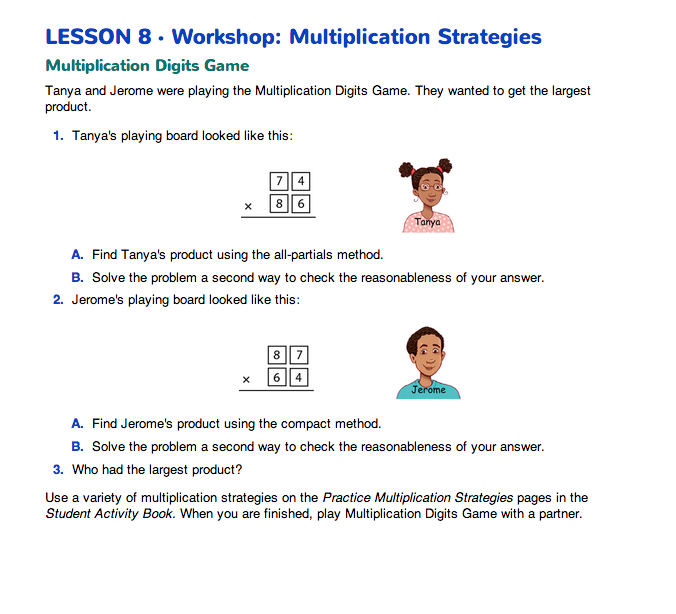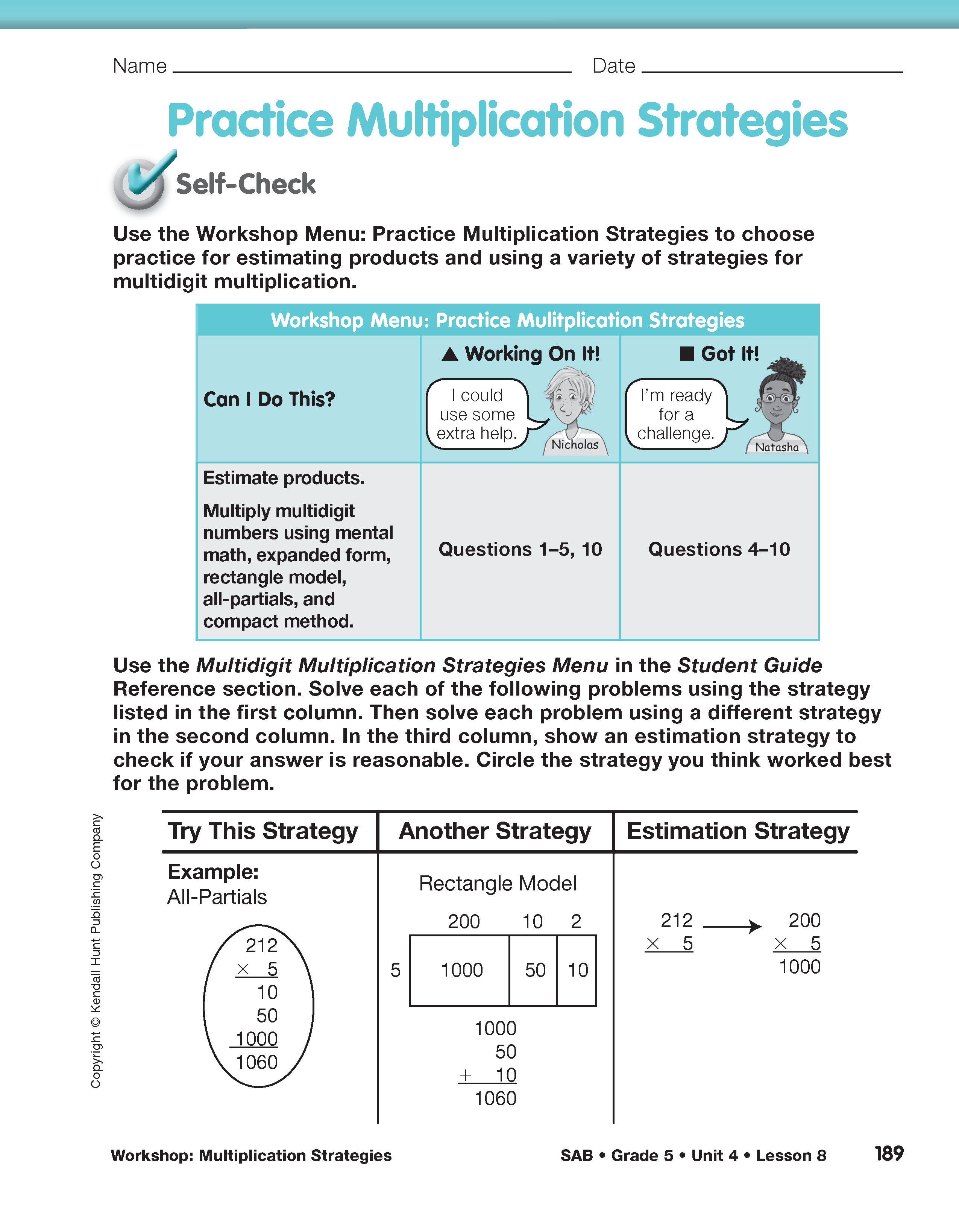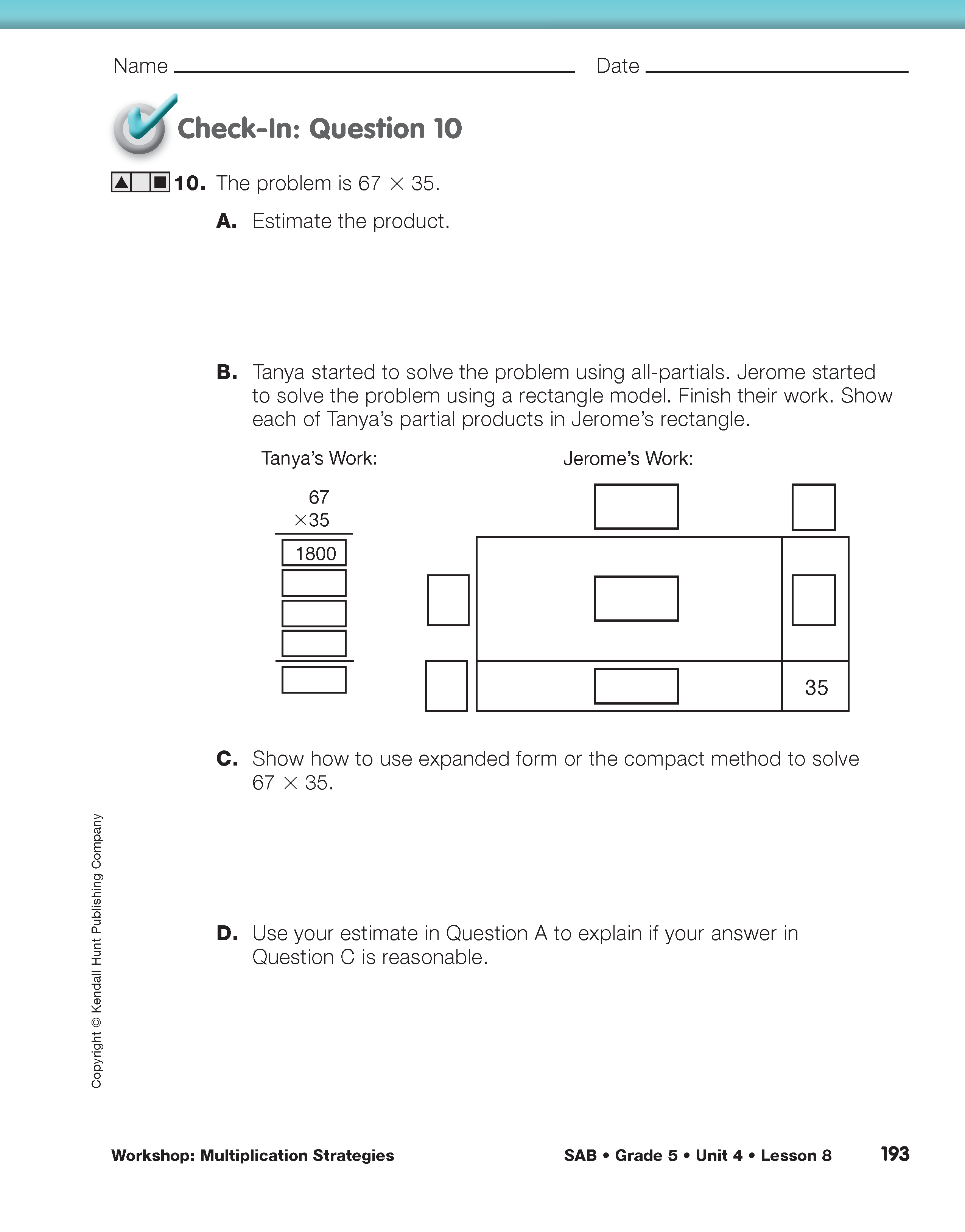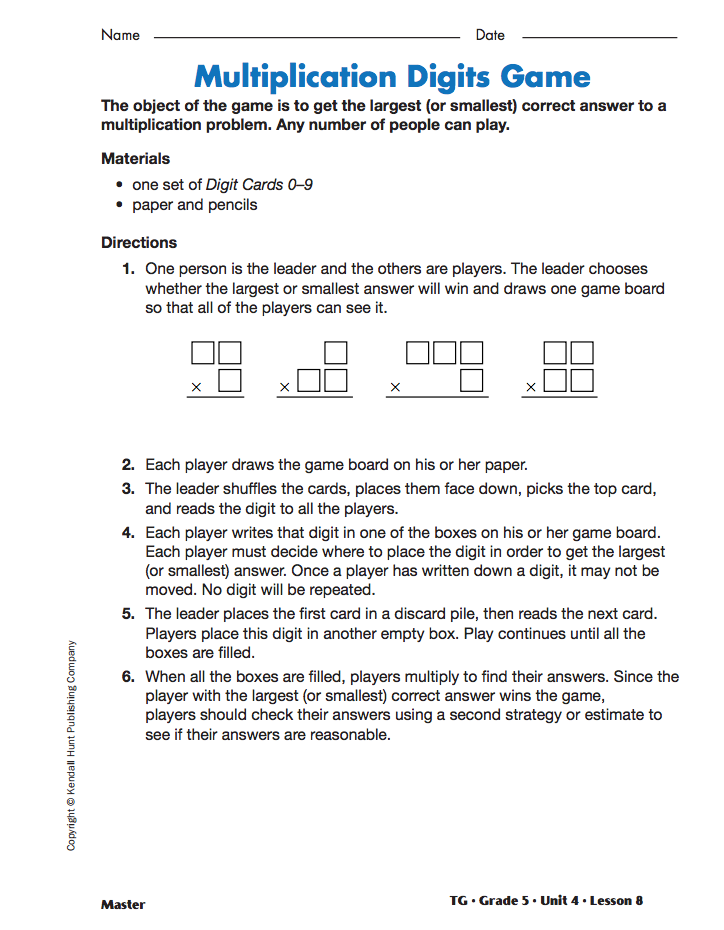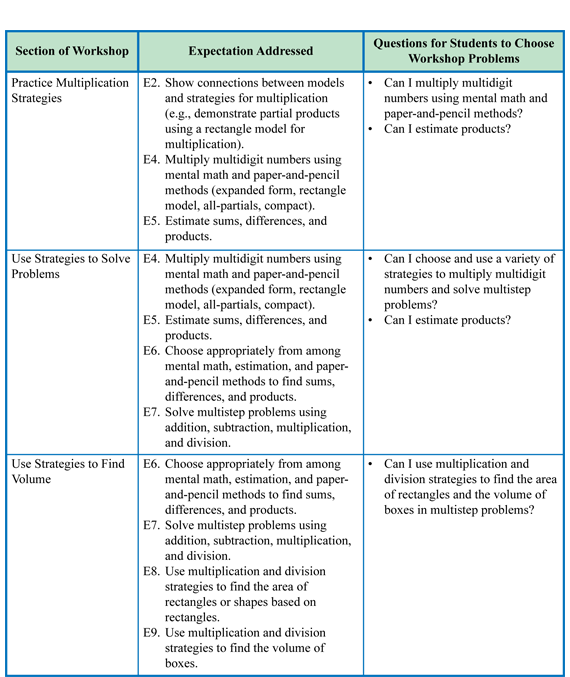Workshop: Multiplication Strategies
Est. Class Sessions: 3Developing the Lesson
Part 1. Practice Multiplication Strategies
Solve Multiplication Digits Game Problems. Begin the lesson by reading the first paragraph on the Workshop: Multiplication Strategies pages in the Student Guide. Ask students to just look at the game boards and estimate the products in order to predict who won the game.
Ask:
Next, ask students to answer Question 1. They will use the all-partials method to find Tanya's product. See Figure 1. Students should refer to the Multidigit Multiplication Strategies Menu in the Student Guide Reference section and refrain from using calculators.
Ask:
Have students complete Question 2. They will use the compact method to find Jerome's product. As students work, ask them to demonstrate how the compact method works by explaining how the carried numbers connect to place value.
Upon completion, ask:
Tell students they will have an opportunity to play the Multiplication Digits Game after they have had time to practice a variety of multiplication strategies. Students who finish their work may play the game, and then time will be devoted again at the end of the Workshop for all to play. If needed, briefly review the directions of the game using a display of the Multiplication Digits Game Master. Student groups will need a set of 0–9 Digit Cards, paper, and pencils.
Choose Targeted Practice. Menus and problems for this Workshop are in the Student Activity Book on the Practice Multiplication Strategies pages and in the Student Guide on the Workshop: Multiplication Strategies pages. Minis of these pages not shown here are in the Answer Key. This Workshop is divided into three sections that address Expectations as shown in Figure 3.
Direct students to the Practice Multiplication Strategies pages in the Student Activity Book. Students begin each section of the Workshop with a Self-Check. For this first section, students self-assess by simply thinking about the “Can I Do This?” questions in the left-hand column of the menu. In other sections of the Workshop, students will complete a Self-Check Question. These questions serve two purposes. First, they clearly communicate the content of the related targeted practice to students. Second, they help students quickly self-assess their progress with Expectations to help them choose which problems to work on in the Workshop. Ask students to think about their progress with these Expectations and choose from the following groups:
- Students who are “working on it” and need some extra help should circle the problem set marked with a triangle (
 ). These problems provide scaffold support for developing the essential underlying concepts as well as some opportunities for practice.
). These problems provide scaffold support for developing the essential underlying concepts as well as some opportunities for practice. - Students who are “getting it” and just need more practice should circle the problem set marked with a circle (
 ). These problems provide opportunities to practice with some concept reinforcement and some opportunities for extension.
). These problems provide opportunities to practice with some concept reinforcement and some opportunities for extension. - Students who have “got it” and are ready for a challenge or extension should circle problems marked with a square (
 ). These problems provide some practice and then move into opportunities for extension.
). These problems provide some practice and then move into opportunities for extension.
Check students' choices to see how well they match your own assessment of their progress on the related Expectations. Help students make selections that will provide the kind of practice they need.
Once students select the questions to complete in a section of the Workshop, have students work independently or with a partner to solve the problems they chose. Match groups of students who have chosen similar sets of problems from the menu. Encourage students to use the Multidigit Multiplication Strategies Menu in the Student Guide Reference section as they are working.
The problems on the Practice Multiplication Strategies pages provide practice using a variety of multiplication strategies: mental math, rectangle model, all-partials, expanded form, and the compact method, as well as estimation strategies.
Upon completion, display and discuss Check-In: Question 10 which involves multiplying a 2-digit number by another 2-digit number.
Ask:














